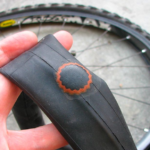Learning how to tune up a bike is not just a skill. It’s an essential practice for every cyclist, and understanding the ins and outs of bike maintenance ensures a smoother, safer, and more enjoyable ride.
In this comprehensive guide on how to do a bike tune up, we’ll delve into the intricacies of keeping your two-wheeled companion in peak condition. From addressing common issues like squeaky brakes and misaligned gears to fine-tuning performance for optimal efficiency, this guide covers it all.
By the end, you’ll not only save money on professional repairs but also gain the confidence to tackle any mechanical challenge. Let’s explore the basics of bike tune-ups for smoother rides.
Tools and Materials Needed
Before you begin the tune-up, gather the essential tools and materials to ensure a smooth process.
- Adjustable Wrench
- Set of Allen Keys
- Lubricants
- Bike Cleaner, Rags, & Brushes
- Tire Pump
- Bike or Work Stand
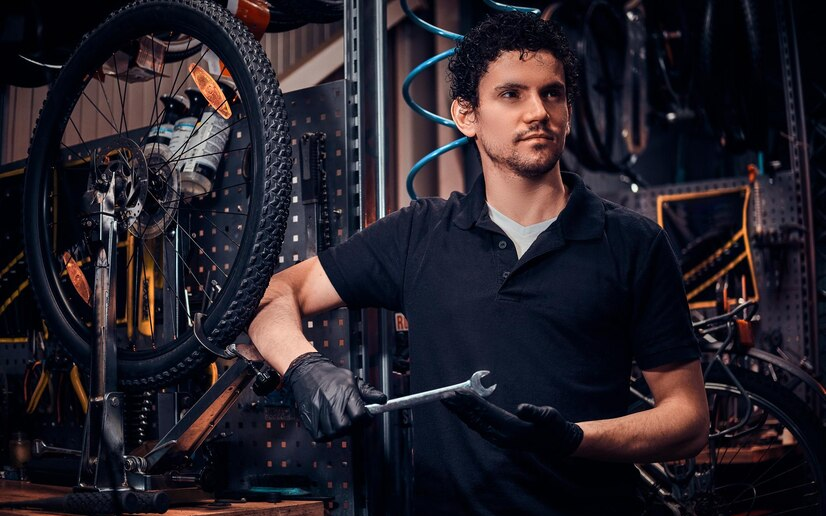
With these tools ready, you’re set to start your bike’s tune-up, ensuring it runs smoothly and efficiently. Remember, a well-maintained bicycle is a joy to ride and can save you from costly repairs down the line.
How to Tune Up a Bike?
Follow this step-by-step guide to learn how to tune up a bike at home effectively:
Inspecting the Bike
A comprehensive inspection is the cornerstone of bicycle maintenance, it’s the critical first step that flags potential issues before they escalate into costly repairs. Examine the frame and fork for any signs of damage or wear.
This structural integrity check ensures your bike can withstand the rigors of the road. Next, scrutinize the wheels and tires for accurate alignment and proper inflation, which is pivotal for a smooth ride.

Assess the brakes for responsive stopping power, a non-negotiable safety feature. The drivetrain demands attention next; inspect the chain, cassette, and chainrings for cleanliness and correct tension.
Lastly, test the shifters and derailleurs for precise gear changes. This systematic approach enhances the bike’s performance and instills confidence in your ride.
Cleaning and Lubrication
A pristine bicycle not only looks great but also performs better. Start by washing the frame and components with a gentle, bike-specific cleaner to remove dirt without damaging any surfaces.
Pay special attention to the drivetrain; apply a degreaser to the chain, cassette, and chainrings, scrubbing off accumulated grime that can prematurely wear out these parts.

After rinsing, dry thoroughly to prevent rust. The final touch is lubrication; apply a quality chain lubricant to reduce friction and ensure smooth operation of the chain and other moving parts.
Remember, using the right cleaners and lubricants is crucial for your bicycle’s longevity and efficiency. This cleaning ritual will preserve your bike’s components and enhance your riding experience, making every pedal stroke a breeze.
Adjusting Brakes
Maintaining optimal brake performance is crucial for vehicle safety. Inspect the brake pads to ensure they are in top condition. Look for signs of significant wear, such as a thinning pad or a deep groove in the metal.
If the pad thickness is less than a quarter inch, it’s time for a replacement. Next, adjust the brake calipers, which are pivotal for even brake application and adequate stopping power. Loosen the caliper bolts slightly, then squeeze the brake lever to align the calipers centrally over the rotor before retightening the bolts.
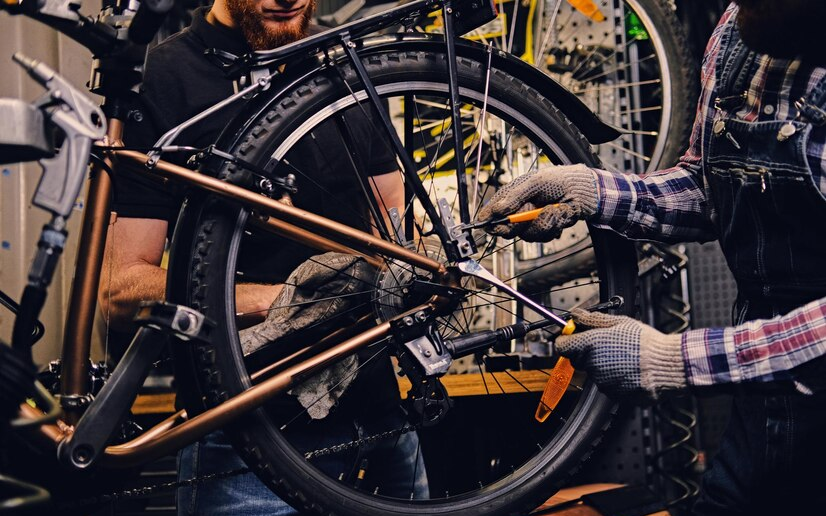
This ensures the pads make contact with the rotor evenly, preventing premature wear and providing a more robust brake response. Lastly, the brake cable tension is vital for responsive braking. If the brake lever feels slack, turn the barrel adjuster counterclockwise to tighten the cable.
Conversely, turn the adjuster clockwise to loosen if the brakes engage too quickly. Test the tension by pressing the brake lever; it should feel firm, not spongy or overly tight. Regular adjustments will maintain the integrity of your braking system, offering peace of mind and a safer driving experience.
Adjusting Gears
For cyclists, mastering gear adjustments is critical to a smooth ride. Shifting gears allows you to maintain cadence and efficiency across varied terrain. If shifting is rough or noisy, it’s likely an issue with derailleur alignment.

Start by checking the front derailleur; ensure it’s parallel to the chain and the gap between it is about 2mm. For the rear derailleur, check the hanger alignment and adjust the limit screws for accurate gear positioning.
Indexing is fine-tuned by changing the barrel adjuster on the shifter cable; if the chain skips or hesitates, turn the adjuster incrementally until the gears shift cleanly. Regular maintenance of your bike’s gear system enhances performance and extends the life of your components, ensuring every journey is as enjoyable as the last.
With these tips, you’ll achieve precise gear changes and a more enjoyable cycling experience.
Checking and Inflating Tires
Maintaining the correct tire pressure is crucial for the performance and longevity of your bicycle tires. Locate the recommended pressure range on the tire’s sidewall. Press firmly onto the valve using a reliable pressure gauge to get an accurate reading.
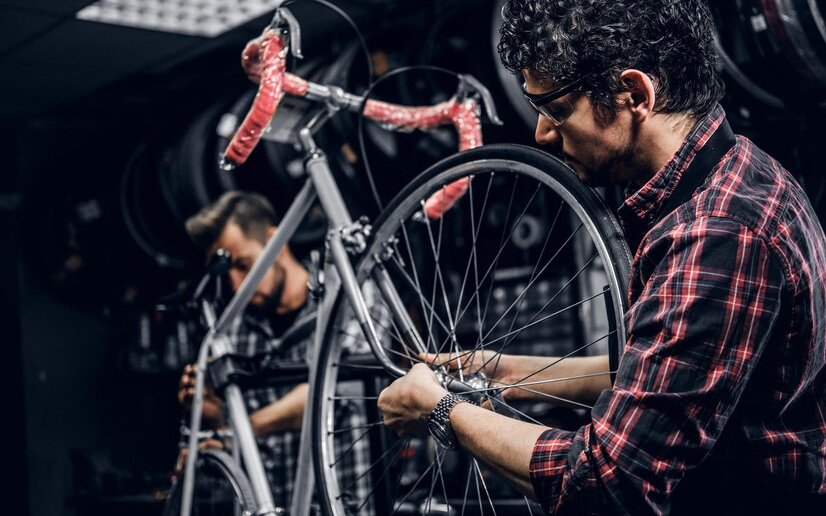
If the pressure is below the suggested level, it’s time to inflate. Before doing so, inspect the tires for any signs of wear, such as cuts or embedded debris, which could compromise tire integrity. Inflating tires to the proper pressure enhances grip, reduces the risk of punctures, and ensures a smooth ride.
To inflate, attach the pump to the valve, and fill slowly, checking the gauge frequently to avoid overinflation. This simple yet essential routine will keep your bicycle rolling efficiently and safely. Remember, consistent tire care is the key to optimal cycling performance.
Steering System Adjustments
To optimize a bicycle’s steering system, it’s crucial first to ensure that the handlebars and stem are tightly fastened, as they are the primary contact points for the rider. A secure fit prevents wobbling and maintains alignment during rides.

Next, headset bearings must be adjusted for smooth steering. If too tight, the handlebars won’t turn freely, and they can cause instability if too loose. The key is to find the perfect tension that allows for effortless movement without any play in the system.
Regular maintenance checks, including inspecting for wear and applying appropriate lubrication, will keep the steering responsive and extend the life of the components. This proactive approach to adjustments enhances the riding experience and ensures the safety and reliability of the bicycle’s steering mechanism.
Inspecting Bearings
Bicycle bearings are pivotal in ensuring a smooth ride, as the linchpin in components like the headset, bottom bracket, and wheel hubs. These small but mighty elements reduce friction, allowing parts to rotate freely without excessive wear.
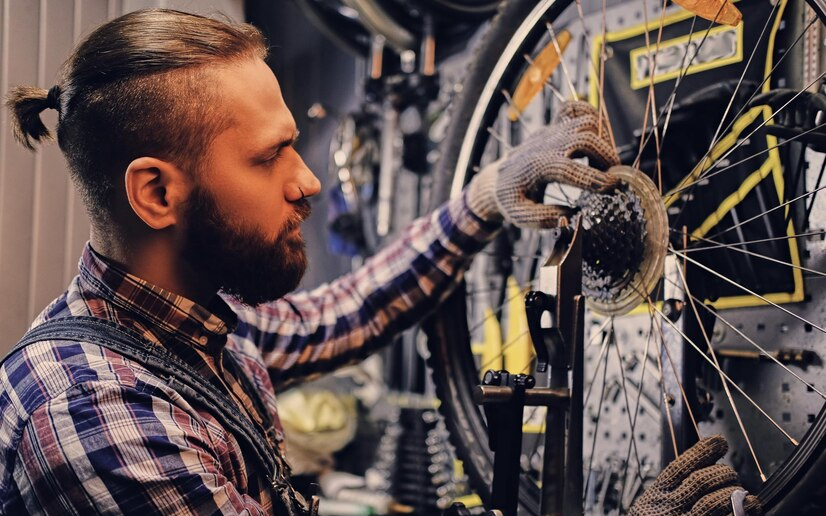
Bearings must be regularly inspected to maintain optimal performance. To assess bearings, start by spinning the affected component; any grinding noise or uneven movement indicates wear.
Check for ‘play’ by gently wiggling the part side-to-side; noticeable movement suggests it’s time for adjustment or replacement. Adjusting bearings typically involves tightening the component’s retaining system to eliminate play while ensuring it still turns freely.
If wear is significant, replacement is the best course of action. Opt for high-quality bearings and consider sealed options for enhanced durability and reduced maintenance.
Remember, proper bearing care extends the life of your bicycle components and contributes to a safer and more enjoyable cycling experience.
Final Checks and Test Ride
Completing a bike tune-up with a thorough final check is essential for a safe and enjoyable ride. Begin by confirming all adjustments are secure, ensuring that components like the saddle, handlebars, and wheels are tightly fastened.
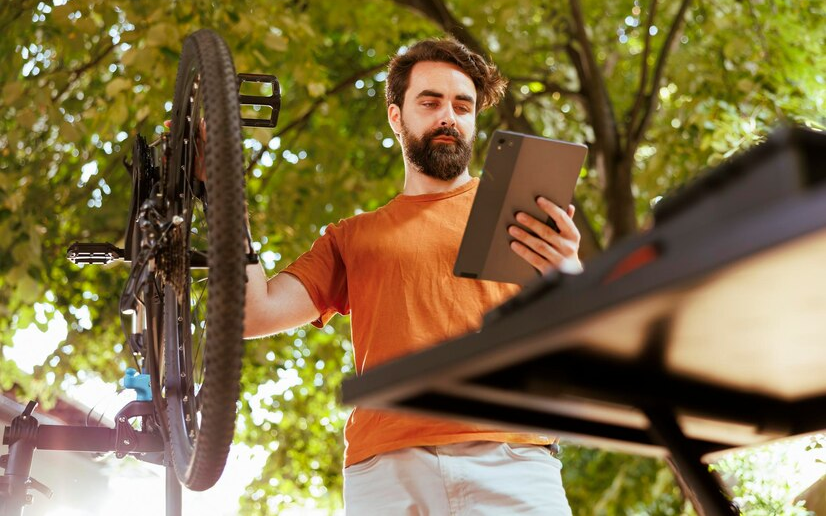
Inspect the connections for any looseness or misalignment. Next, test the brakes and gears; they should operate smoothly and responsively. Perform these tests in a safe area where you can manage the bicycle without traffic or obstacles.
Finally, take a brief test ride to verify the bike’s performance. Listen for any unusual sounds and pay attention to the bicycle’s handling. This ride is critical to confirm that your tune-up was successful and the bicycle is ready for longer journeys.
These steps will set the stage for a reliable and efficient cycling experience.
How Much Does it Cost to Tune Up a Bike?
Tuning up a bicycle at home can be cost-effective. Expenses typically range from minimal to moderate, depending on the tools and parts required.
Essential maintenance, such as adjusting brakes and gears, can be done with common household tools and might only require purchasing lubricants or minor parts, keeping costs under $50.
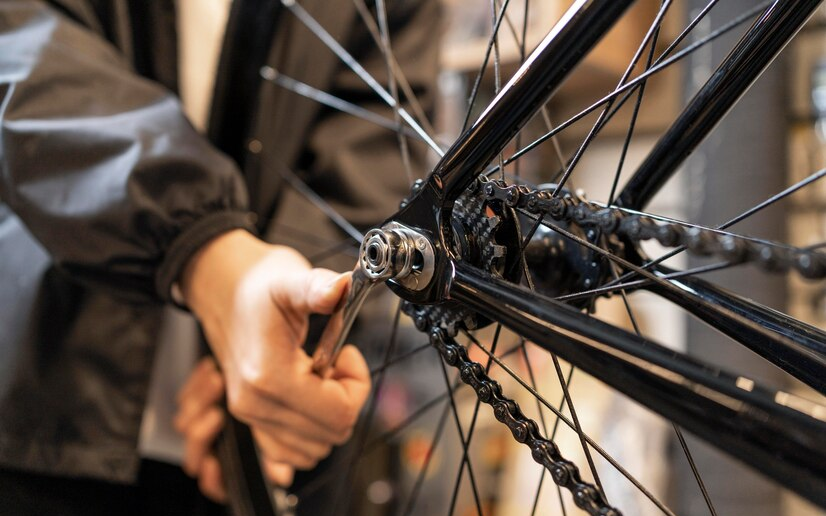
However, prices for a comprehensive tune-up by a professional at a bike shop can vary widely. Factors influencing the cost include the bike’s condition, the extent of the service, and regional pricing differences.
On average, a standard tune-up costs between $60 and $100, while a more extensive service, including part replacements, can exceed $200. It’s wise to compare services from different shops to find the best value.
Investing in regular tune-ups can prevent costly repairs in the long run and ensure your bicycle performs at its best.
Conclusion
Hope you’ve learned how to tune up a bike. Tuning up a bicycle significantly enhances performance and safety, ensuring a smooth and reliable ride.
Regular maintenance is vital to preserving the integrity of your bicycle, preventing wear and tear from escalating into costly repairs. By adhering to a consistent tune-up schedule, cyclists can enjoy improved handling, increased efficiency, and a safer cycling experience.
This proactive approach to bicycle care extends your bike’s lifespan and supports a sustainable mode of transportation. Embrace the bike tune-up routine to maintain peak performance and safeguard your journey on two wheels.
FAQs
Neglecting bicycle tune-ups can lead to decreased performance, higher wear and tear, and potential safety hazards during rides.
The frequency of tune-ups depends on usage; generally, a thorough tune-up once a year is recommended for regular cyclists.
Tune-up duration varies by bicycle condition and work needed; a basic tune-up typically takes between 30 minutes to 2 hours.
Signs that your bicycle needs tuning include unusual noises, poor shifting, brake issues, or any change in ride quality or handling.


